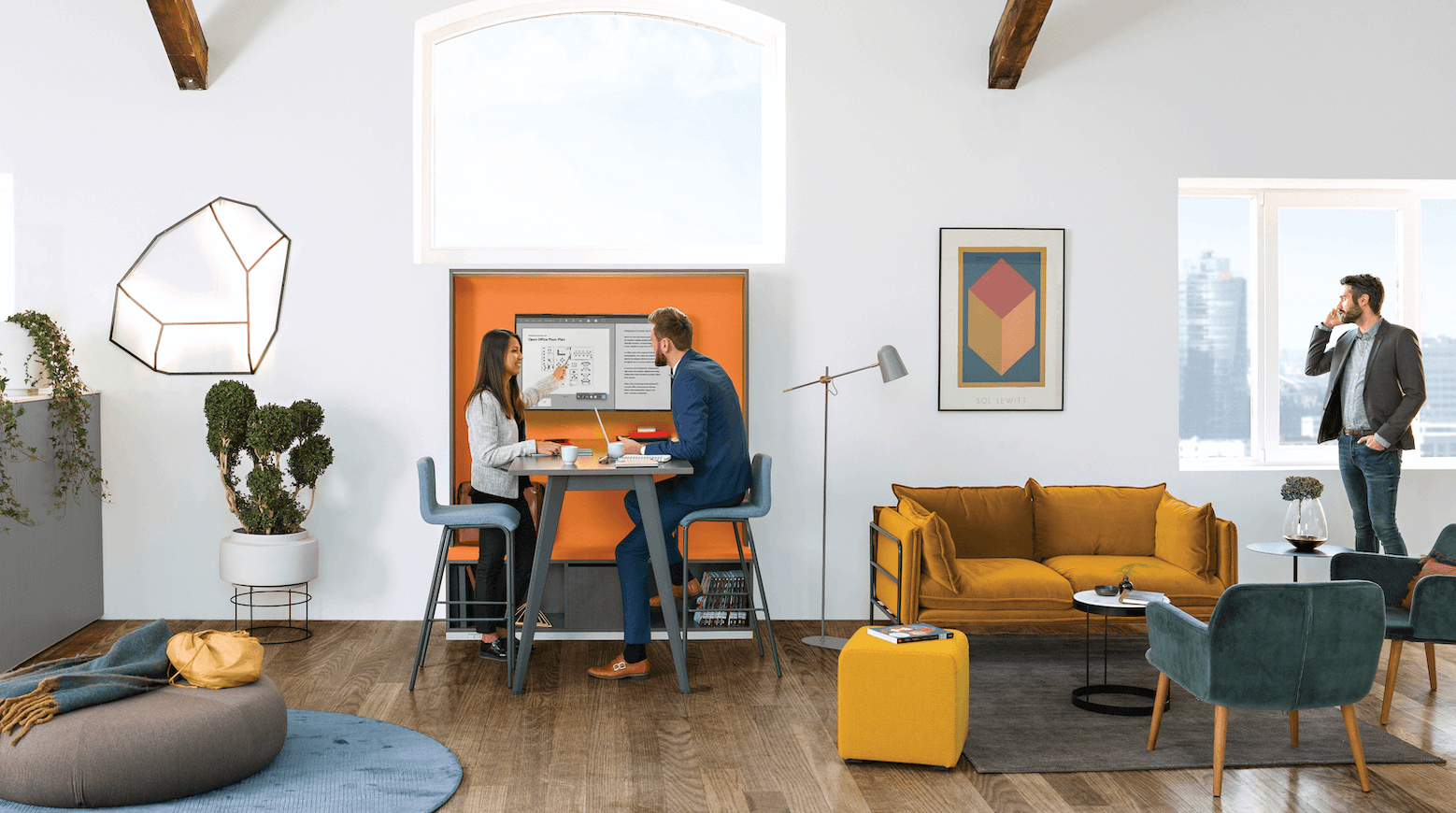Last weekend, 16,000 neighbourhood street parties took place around the country to celebrate the Queen’s Platinum Jubilee. People gathered in the streets with balloons, bunting and Union Jack flags to enjoy the occasion.
This coming together of groups of residents reminds us just how vital our neighbourhoods are. Several studies have shown that cohesive neighbourhoods can positively shape their residents’ wellbeing.
We know that people who live in cohesive neighbourhoods support each other, share information, and motivate each other to live better.
And as companies around the world shift to hybrid working, to encourage people back to the office, some argue we should be looking to our neighbourhoods for inspiration.
.jpg?width=3200&name=Makers-Commons-17-0078809%20(1).jpg)
Neighbourhoods - a new vision for the workplace
“The best neighbourhoods are ones that foster inclusion and exude personality, where ideas are born and trends are launched. This is what people at work need more than ever before.” Steelcase
The idea behind the neighbourhood format is to create the same energy and connection people feel sitting in their local cafe and the same level of peace and privacy they feel in their own homes - in the workplace.
Like the neighbourhoods we live in, neighbourhoods at work are a base for people and teams. They are a place to feel connected and comfortable.
So what should the work neighbourhood look like?
According to Steelcase, the work neighbourhood consists of several “interconnected spaces” that “support different types of work, a mixture of uses and the natural flow from one to another.”
In the home neighbourhood, these interconnected spaces can include the home, the park, and the cafe.
In the work neighbourhood, they may include:
- Individual work spaces that may be assigned to one person or shared amongst the whole team
- Collaboration spaces supporting both in-person and virtual interactions
- Areas for quiet, heads down work or solitude and rejuvenation
- Spaces to gather, socialise and share information with teammates
Spaces for teams to thrive
The workplace neighbourhood concept isn’t strictly a new one. In recent years companies have been working to create spaces that teams can call home, where they have all the furniture, tools and technology they need to feel comfortable and do their best work.
Teams need places they can surround themselves in their project and display their thinking and ideas. Having a ‘base’ helps team members to sustain a shared mindset, gives them a space to focus, and speeds up the collaborative process.
The look and feel of these neighbourhoods also impact workers’ wellbeing and productivity. With this in mind, lighter, more creatively stimulating environments with the addition of natural materials and plant life are key.

Fostering interaction and community
Neighbourhoods also help people to feel connected to the workplace culture and a sense of community. This feeling of belonging is something workers are looking for from the post-Covid office - it’s what encourages them to come to the office and stay at a company for longer.
Work neighbourhoods will require spaces that help to foster interaction. Think lounges and huddle rooms where workers can socialise, catch up with colleagues professionally and personally, and hash out ideas.
These spaces must also facilitate virtual interactions between colleagues in the office and those working remotely.
These spaces should be filled with a range of furniture to support different needs, from lounging to private interactions between two colleagues. Acoustic barriers and screens - much like fences - create boundaries for preserving privacy while still enabling workers to feel part of the community.
.jpg?width=3200&name=Duo-Studio-17-0078750%20(1).jpg)
Four design principles
Four design principles should guide the creation of neighbourhoods, according to Steelcase:
- Me + We - Neighbourhoods at work should support both individual and team work, just like the ones we live in.
- Fixed-to-Fluid - Neighbourhoods evolve, so work neighbourhoods should be modular and flexible.
- Open + Enclosed - Neighbourhoods consist of public and private spaces, and work neighbourhoods should be no different.
- Braiding Digital + Physical - Urban planners are creating smart cities, and hybrid office neighbourhoods need to do the same. Video meetings are the new normal and spaces must be designed so technology is easy to use.
Summary
Hybrid work is great for many people, but it’s challenging for companies to implement smoothly.
By creating tailored neighbourhoods that meet employees’ needs, organisations can create spaces that allow workers to be comfortable and productive.
The organisations that succeed in this new world of work and who will be able to attract and retain the best talent will be those who create workplaces where people feel welcomed, part of the community, and where they can do their best work.
Now that sounds like a neighbourhood anyone would want to live in.










